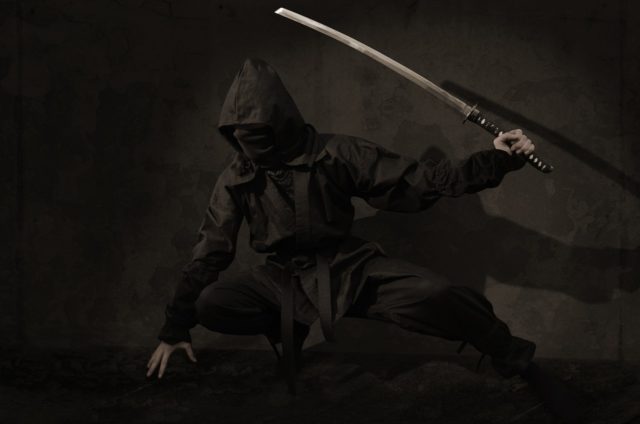One of the most difficult things to deal with in life is realizing you believe something that isn’t true. Having your beliefs challenged and coming up with something that alters your worldview can be either enlightening or devastating. And when you realize something you believe in never existed at all, that can shake you to your very core. Or at least make for a cool story.
10. Any Particular Shuffle of a Deck of Cards is Statistically Unlikely to Have Ever Existed Before

The United States Playing Card Company sells 100 million decks of cards every year. And that’s just one company. It’s a safe bet that cards are the most popular gaming accessory in the world. They can be traced back to the 1300s in Europe and the number of different card games a person can play is well into the thousands. With all those cards and all those games, one of the most surprising things about a deck of cards is not what they can do but what they cannot do. And, statistically speaking, what they can’t do is ever be shuffled the same way twice.
Although it’s not impossible (though it is impossible to know one way or another), it is mathematically unlikely that when you shuffle a deck, what you end up with in your hands has ever existed in the entire 700 year history of playing cards. There are factorial 52 ways to arrange a deck of playing cards during the shuffling process. That means, after shuffling, there are 52 potential cards that could be on the top of that deck. Flip it over and now there are 51 potential cards that could be the second card and so on down the line. Each of 52 cards could be the first, each of 51 could be the second, and so on. In the end, the total number of potential arrangements works out to a number that you probably don’t want to try to give a name to, which is:
80,658,175,170,943,878,571,660,636,856,403,766,975,289,505,440,883,277,824,000,000,000,000.
In simpler terms, it’s an 8 with 67 zeros after it. It’s a big number. If everyone who ever lived spent their whole lives shuffling cards, we’d still never come close to shuffling all the combinations.
9. Monastic Vows of Total Silence Don’t Really Exist

Monks taking a vow of silence have been a staple of pop culture for any number of years now. There’s even a Buddhist monk in Hangover 2 who’s played for laughs that doesn’t speak. It’s true that some devout monks or nuns may choose periods of silence, but no monastic order fully practices this. Moreover, when individual monks do choose silence, it’s not an all-encompassing and unbreakable practice. Instead, it involves choosing to “speak with silence” and become closer to their faith. Time is still set aside for conversations, typically at the end of the day.
For the most part, the idea of a vow of silence is to prevent one from speaking without care. It allows for introspection and a better understanding of one’s self. This can take place between designated prayer periods, for several days or weeks at a time, or possibly longer if someone chose. But it’s not enforced and it’s also not expected. Plus, if something did need to be communicated, there would never be a reason not to share important information.
8. 10 Days in 1582 Never Existed

If there’s one thing most of us can count on always existing, it’s time. Time marches on whether we pay attention to it or not. You go to sleep and wake up eight hours later. The world kept spinning, and it didn’t care that you weren’t there to pay attention to it. This seems like something you can rely on. Unfortunately, you can’t. Time as we understand it is a human concept. We created years and months and days and chopped them up with specific denominations. Because of that, we also found ways to manipulate them and never more noticeably than for 10 very odd days back in the year 1582.
In 1582, we adopted the Gregorian calendar, and herein we find a problem. The whole world was never united in its understanding of concepts like time, which is why you’ll hear about the Chinese calendar and the Aztec calendar from time to time. Before the Gregorian calendar, we used the Julian calendar.
The Julian calendar dated back to 46 BC when Julius Caesar introduced it, and it had problems. The length of a Julian year was 365.25 days. Almost exactly the same as the Gregorian calendar. But almost doesn’t count. After 1600 years of having a slightly too long year, things had fallen out of sync, notably the equinoxes and solstices. The calendar was off by a day every 314 years and so, when the Gregorian calendar took over, 10 days just had to vanish.
7. Abraham and Moses Probably Never Existed

For about as long as the Bible has existed, people have wondered just how much of it is legit. Obviously, more people took the stories on faith back in the day and folks in the modern world are less inclined to believe that Noah’s ark was a literal thing rather than an allegorical thing. That’s not to say no one believes that, but it’s a mixed bag these days, even among people who are generally Christian. That’s why it’s surprising to learn what scholars of the Bible consider to be entirely apocryphal, such as the stories of Abraham and Noah. Which is to say they believe neither of those men were real people.
Back in 2002, the United Synagogue of Conservative Judaism issued a new Torah and commentary that helped frame their beliefs in the context of history, archaeology, anthropology and more. The information they shared traced the origins of many stories from Exodus to other sources and explained how Noah’s ark was likely borrowed from the epic of Gilgamesh and there was no anthropological evidence for Israel’s trek across Egypt or really anything from the entire book being true in a historical sense.
Figures such as King David, Abraham, Moses, Jacob and King Solomon were likely just fiction, according to professor Thomas Thompson, one of the world’s most prominent biblical scholars. This was based on his own 15 years of research into archaeological evidence surrounding much of what is detailed in the Old Testament.
While the information no doubt shook the faith of some, rabbis and others have found ways to try to incorporate what is known with what is believed, as faith is really not the sort of thing you need concrete evidence for all the time, anyway. Most serious scholars and religious leaders had been well aware of these facts for years, but took time breaking it to their congregations and believers.
6. Wild Cows as We Know Them Never Existed

Most pet owners have looked at their dog or cat at one point and thought, “how would you have ever made it in the wild?” Domestic animals, of course, are not meant to make it in the wild. They’re the result of generations of breeding for very specific traits that essentially make them unfit for living in the wild, and cows are no different. In fact, it’s very unlikely cows would ever make it in the wild because there have never truly been wild cows.
The animals we raise for beef today are descended from species like oxen and aurochs, the closest thing that ever existed to a cow in the wild, but still not a cow. Domesticating cows from their wild cousins was a monumental task that was remarkably difficult. All the cattle that exist today, some 1.3 billion of them, descended from just 80 animals that were domesticated 10,500 years ago. They were bred into a much tamer and easily manageable species.
5. Matriarchal Societies Have Never Existed

Search through social media these days and you’ll see patriarchy mentioned very often. That’s a society in which men are the dominant force. It implies that a matriarchy could also exist in which women are in charge. That definition is true and reasonable, but from a historical standpoint, it’s entirely made up. Anthropologists have found no evidence that a true matriarchal society has ever existed.
There has long been a belief that there was a time, often cited as 5,000 years in the past, when women were revered and ruled before the idea of a patriarchy existed, but the evidence doesn’t bear this out. That’s not to say there haven’t been more egalitarian societies in the past and obviously instances of women rulers, but as an entire basis in society, it’s never been done.
4. Ninjas Were Probably More Like Spies than Assassins

Everyone knows ninjas, even if only in mutant turtle form. Cloaked and mysterious warriors of ancient Japan equipped with deadly weapons and inhuman stealth. They’ve been a pop culture staple for ages. Turns out they were mostly born there, too.
It’s not that ninjas never existed. But ninjas, as we understand them, likely didn’t. The history of ninja is foggy at best, and there’s reason to believe that much of what we think we know about ninjas was tall tales, speculations, exaggerations, and supposition.
What is known about them makes them sound less like stealthy assassins and more like ancient intelligence agents, like old school CIA. Who, of course, are also sometimes assassins.
3. True Photographic Memory Has Never Been Demonstrated to Exist

Every so often you’ll run across a movie in which a character claims to have a photographic memory. This quirk of biology seems super helpful and there have been people who have demonstrated an amazing recall in lab conditions. The guy who the movie Rain Man was based on had memorized over 9,000 books cover to cover. That said, photographic memory, as depicted in fiction, has never been demonstrated in real life.
So how can someone memorize 9,000 books but not have a photographic memory, you might ask? It comes down to how they remember things. Someone who can recite pi to 67,890 digits like Lu Chao did is amazing, but he probably couldn’t do it in reverse. And that matters because a true photographic memory would allow for that, to view any detail in any order at any time. You might think the difference is negligible, but it is a difference.
2. The Authors of the Hardy Boys and Nancy Drew Were Made Up

Both the Hardy Boys and the Nancy Drew series of novels are remarkably popular. Over 70 million Hardy Boys books have been sold. Nancy Drew can make the same claim. So you’d think their authors, Franklin W. Dixon and Carolyn Keene, respectively, would be pretty excited. Except neither one is a real person.
Dixon and Keene are pen names used by a slew of writers. Both were made by Edward Stratemeyer in the 1920s, who created the names and assigned ideas he’d come up with to other writers so they could develop them into whole books. It’s a lot like the way content mills on the internet work today.
1. Magenta Doesn’t Exist on the Spectrum of Visible Light

Where on the rainbow would you find magenta? The answer is, of course, nowhere. And to some people, that means magenta as a color doesn’t exist at all. Except you can also go buy a magenta pencil crayon right now, so what’s going on?
First, you can find magenta on a color wheel where red and purple come together. This doesn’t happen on the light spectrum, though. That means magenta doesn’t have a wavelength like the other colors we recognize in a rainbow. But it does exist in a mix of wavelengths and that’s what our brain perceives when we look at magenta. That means our brain sort of fills in some gaps made by the way we perceive wavelengths of light with our eyes and gives us magenta. But, in fairness, every color is constructed in our brain based on how light wavelengths are processed and interpreted, right? It’s real insofar as any color is real, but it needs our brain to make it real.